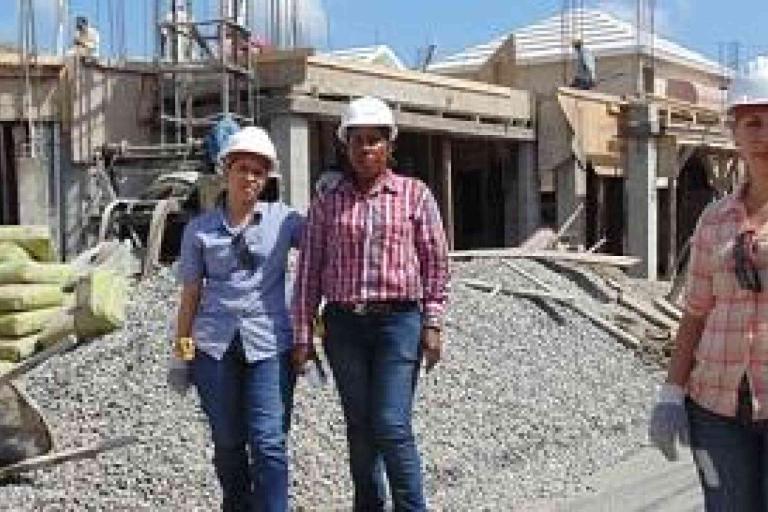Women must be central in disaster prevention

CANCUN, Mexico, 26 May 2017 – Countries around the world need to focus on women if they are to achieve the aims of a 15-year agreement to curb hazard impacts, according to delegates at the 2017 Global Platform for Disaster Risk Reduction.
The Global Platform, hosted by the Mexican government, has drawn thousands of delegates who are assessing efforts to implement the Sendai Framework for Disaster Risk Reduction, adopted at a UN conference in 2015.
The Sendai Framework has seven targets. It aims to bring about substantial reductions in disaster deaths, the number of affected people and economic losses, plus damage to critical infrastructure and disruption to basic services such as health and educational facilities.
It also seeks to increase the number of countries with national and local risk reduction strategies – by 2020, the earliest deadline in the framework and a key step for meeting the other targets – as well as bolstering the capacity of developing countries, and vastly increasing coverage by early warning systems.
“We’re going to have to emphasize women’s empowerment if we’re going to achieve these goals,” said Ms. Laura Tuck, the World Bank’s Vice President for Sustainable Development.
The Sendai Framework Framework puts gender front and centre due to its whole-of-society approach.
Disasters affect men and women, and boys and girls, differently for an array of reasons.
“Disasters are unfair. They discriminate,” said Mr. Elhadj As Sy, the Secretary-General of the International Federation of Red Cross and Red Crescent Societies (IFRC).
For example, gender inequalities can hamper the influence and control of women and girls over decisions governing their lives and those of their families. And due to socio-economic conditions, cultural beliefs and traditional practices, women and girls are more likely to be affected if a hazard strikes, facing increased loss of life and livelihoods, and gender-based violence, during, and in the aftermath of, disasters.
“We must cut the roots of discrimination wherever they appear,” said Ms. Amina J. Mohammed, Deputy Secretary-General of the United Nations.
The figures are stark from disasters such as the 2004 Indian Ocean Tsunami, where women and children made up 77% of the victims in Indonesia, or the Solomon Islands’ own deadly wave of 2007, where the proportion was 96%. And in Bangladesh’s Cyclone Gorky disaster of 1991, women outnumbered men by 14 to 1.
Vulnerability was caused by insufficient access to information and early warnings, as well as the fact that they were less likely to know how to swim, and that long clothing hampered their movement.
“It is not often mentioned as a driver of disaster risk alongside poverty, climate change, rapid urbanisation, poor land use, weak governance but there is no doubt that this Global Platform has put gender inequality on the map as a driver of disaster risk,” said Mr. Robert Glasser, Special Representative of the UN Secretary-General for Disaster Risk Reduction and head of UNISDR.
His remarks were echoed by Ms. Inonge Wina, Vice-President of Zambia: “At the bottom of this, we find that gender inequality remains a major barrier to human development. It’s about time that women be recognised. And women should also be in a position to assume leadership themselves.”
Women should not just be seen as disaster victims, she and the other speakers underlined.
“Women are not just a vulnerable group. They are also agents of change,” said Mr. Yannick Glemarec, Deputy Executive Director of UN Women.
Women have huge potential and actual engagement and leadership in disaster risk reduction, and their often unique roles in resilience building, disaster response and recovery. They are often first responders when disaster strikes, tending to the needs of their families and communities and coping with the adverse impact on their livelihood and possessions.
UN Women, the IFRC and UNISDR on Thursday joined forces to launch the “Global Programme in Support of a Gender Responsive Sendai Framework Implementation: Addressing the Gender Inequality of Risk and Promoting Community Resilience to Natural Hazards in a Changing Climate”, or GIR for short. The goal of the global programme is to reduce loss of lives and livelihoods, and to enhance the resilience of communities to natural hazards by addressing the gender inequalities that are exploited and worsened by disasters.
- WMO Member:
- Afghanistan

